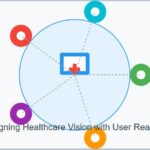Bridging the Digital Divide in Healthcare Implementation. –VirsaFeed
Healthcare and pharmaceutical organizations are increasingly adopting digital solutions to streamline operations, improve patient care, and ensure regulatory compliance. However, even the most sophisticated software solutions can fail when users aren’t aligned with the company’s vision. This misalignment creates unique challenges in healthcare settings where stakes are particularly high.
The Root of Resistance
Healthcare professionals often develop deeply ingrained workflows over years of practice. When new software systems disrupt these established patterns, resistance naturally emerges. In pharmaceutical companies, researchers and quality control specialists may have specific methodologies they’ve refined over time. The introduction of standardized digital processes can feel like a threat to their expertise and autonomy.
Impact on Patient Care and Drug Development
When healthcare providers resist new software implementations, the consequences ripple throughout the organization:
Clinical Settings
– Physicians spending more time navigating unfamiliar interfaces than interacting with patients
– Incomplete or inconsistent data entry leading to compromised patient records
– Workarounds that bypass critical safety features
– Delayed adoption of evidence-based practices built into the software
Pharmaceutical Operations
– Researchers maintaining parallel paper records, creating data inconsistencies
– Quality control processes being documented retrospectively rather than in real-time
– Compliance risks due to incomplete electronic batch records
– Delayed product releases due to documentation backlogs
Real-World Manifestations
The misalignment between users and organizational vision manifests in several ways:
Passive Resistance
Staff members may technically comply with using new systems while maintaining old processes in parallel, effectively doubling their workload and negating efficiency gains. In pharmaceutical labs, this might mean maintaining shadow systems for experimental data or continuing to use paper notebooks alongside electronic lab notebooks.
Active Opposition
Some users actively resist by finding and exploiting system weaknesses or organizing collective opposition to new processes. This is particularly challenging in healthcare settings where professional autonomy is highly valued and protected.
Malicious Compliance
Users might follow new procedures to the letter while deliberately highlighting every inefficiency and delay, creating a self-fulfilling prophecy of system failure. This behavior can be especially damaging in time-sensitive healthcare environments.
Breaking Through the Barriers
Success requires a multi-faceted approach:
Early Engagement
Include end-users in the software selection and implementation process. When physicians, nurses, and researchers feel ownership over the change, they’re more likely to embrace it. This might mean:
– Creating user advisory boards for software evaluation
– Running pilot programs with influential department leaders
– Incorporating feedback loops during implementation phases
Customization Within Constraints
While maintaining necessary standardization, allow for some workflow customization. In pharmaceutical settings, this might mean configuring electronic batch records to match existing processes while ensuring compliance requirements are met.
Continuous Education
Beyond initial training, establish ongoing education programs that:
– Address evolving user needs
– Share best practices across departments
– Highlight efficiency gains and success stories
– Provide regular updates on system improvements
The Role of Leadership
Leadership must bridge the gap between organizational vision and user reality:
Clear Communication
Articulate how the software solution supports both organizational goals and individual user needs. In healthcare, this means demonstrating how digital tools can improve patient outcomes while making providers’ jobs easier.
Visible Support
Leaders should:
– Actively use the new systems themselves
– Participate in training sessions
– Address concerns promptly
– Celebrate early adopters and success stories
Resource Allocation
Ensure adequate resources for:
– Comprehensive training programs
– Technical support
– System customization
– Performance optimization
Moving Forward
Success in healthcare and pharmaceutical software implementation requires balancing organizational needs with user realities. When users aren’t aligned with the company’s vision, the path forward involves:
1. Understanding and addressing the root causes of resistance
2. Creating meaningful engagement opportunities
3. Demonstrating tangible benefits to daily workflows
4. Providing robust support systems
5. Maintaining open communication channels
The key lies in recognizing that software implementation isn’t just a technical challenge—it’s a human one. By focusing on user alignment from the start, organizations can avoid the pitfalls that doom many healthcare technology initiatives and create lasting positive change.
Know the Author
Hey there, readers! Welcome to my little corner of the internet. I ain’t just your average blogger — I’m a seasoned project manager with a knack for diving deep into research and unraveling the mysteries of project management. But that’s not all there is to me! With a background in Healthcare, IT and Pharmaceuticals for Project management, hospital management and a passion for travel, hiking, and trekking, I’m all about blending the professional with the adventurous. So, join me on this voyage where we’ll explore the ins and outs of strategy, project management and share tales from the management, travels, and maybe even swap tips along the way.
Feel free to visit my site to know more about my researched output in the form of blogs: http://www.virsafeed.com/
Would you like to connect with me? Please drop me an email at virsafeed.com@gmail.com









